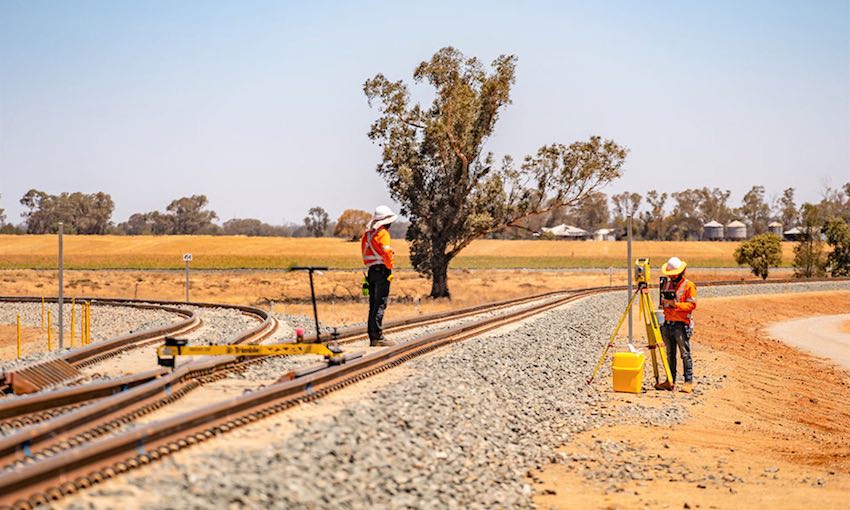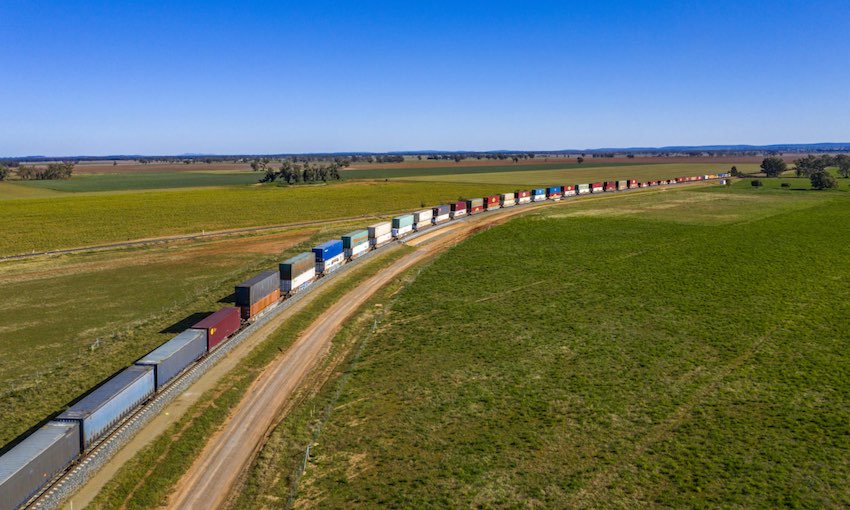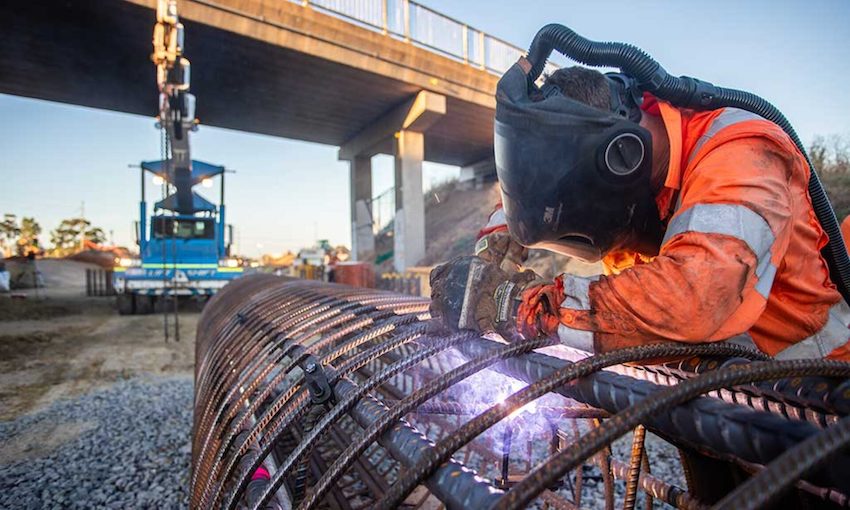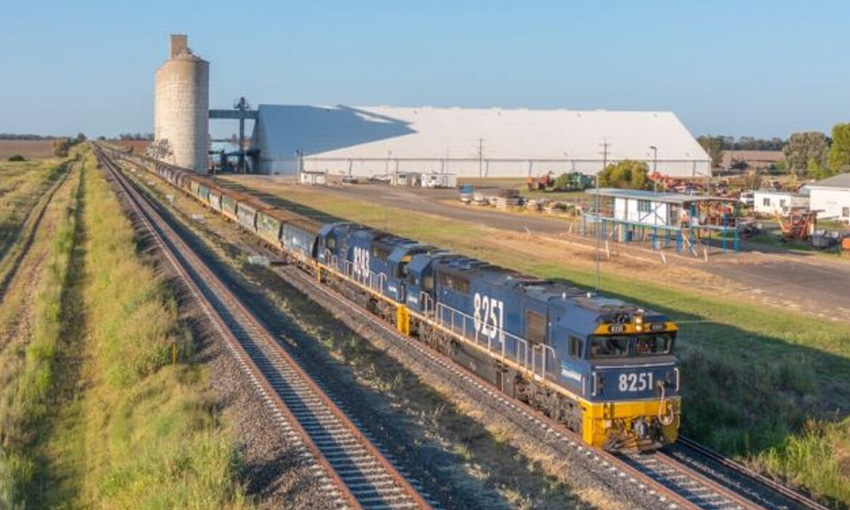THE FEDERAL government has accepted all 19 recommendations outlined in a damning review of the Inland Rail project.
The government appointed Dr Kerry Schott to head up the independent review in October last year. Dr Schott delivered her report to federal ministers on 13 January, and the government publicly released the report on Thursday (6 April).
The government said the review highlighted “major deficiencies” in the governance and delivery of Inland Rail – a finding that prompted new appointments to the Australian Rail Track Corporation board in February.
The report maintained that Inland Rail is an important project to meet Australia’s growing freight task, improve road safety and to help decarbonise the nation’s economy.
However, it also suggested the project is running “significantly over budget and significantly behind schedule” with around 16% of the 1700-kilometre track completed so far.
“The ARTC estimate of the cost of the project has increased by an astonishing amount when compared to 2020,” Dr Schott wrote in her report.
“Two years ago, the estimate was $16.4 billion and now it is about $31 billion.
“Somewhat surprisingly the project has commenced delivery without knowing where it will start or finish.”
She said the final date and cost remain uncertain because of a lack of confidence in the current estimates.
Recommendations
Dr Schott put forward 19 recommendations to improve the delivery of the Inland Rail, including enhanced governance arrangements, the identification of intermodal terminal locations and ensuring appropriate environmental approval processes.
The government has accepted all of Dr Schott’s recommendations in full or in-principle.
Federal minister for infrastructure, transport, regional development and local government Catherine King believes Inland Rail project is behind schedule, over budget and requires a fundamental reset.
“Australia’s investment in Inland Rail is critical to help us move more freight as our population grows,” she said.
“Inland Rail can reduce our transport emissions and make our roads safer, but it comes at a significantly higher cost.
“Given the abysmal state the former government left the project in, we must take immediate action to get it back on track.
“ARTC will prioritise the delivery of Inland Rail sections between Beveridge and Parkes, while we continue to affect change across the program, improve governance and risk management.
“When this government can have faith that adequate environmental planning approvals are in place and there is sufficient certainty as to the scope and cost to build more of Inland Rail, we will do just that.”
Federal minister for finance Senator Katy Gallagher said the Australian government acknowledges the lack of confidence with respect to the costs of Inland Rail.
“The findings of the review are another damning indictment of the former coalition government, and another example of the Albanese Labor government needing to clean up the mess left behind by our predecessors,” she said.
“We will act sensibly and responsibly to ensure this important project is put back on track.”
Plans for Beveridge
The government said it plans to take a staged approach to the delivering the project, prioritising its delivery from Beveridge in Victoria to Parkes in New South Wales.
Its goal is to increase resilience and improve supply-chain productivity between Melbourne, Perth, Sydney, Newcastle, the Illawarra and Adelaide.
National Intermodal, a government enterprise established to support the Inland Rail project, welcomed the government’s endorsement of Dr Schott’s recommendation that two new independent intermodal terminals connecting to the Inland Rail be delivered in Melbourne.
One would be delivered at Beveridge in Melbourne’s north, where National Intermodal last week exercised an option to acquire land. The other would be delivered at Truganina in Melbourne’s west.
National Intermodal CEO James Baulderstone said the Beveridge terminal would create a critical piece of the Inland Rail Melbourne to Brisbane journey and an immediate alternative route for rail freight between Melbourne and Perth.
“The greater the number of rail operators and logistic service providers that can be encouraged to use rail as their first choice for interstate freight transport, the greater the flow on benefits to the Australian community,” Mr Baulderstone said.
“Growing both rail’s share of the transport freight challenge, while also increasing competition in the rail sector, will ensure the cost savings, increased resilience, lower emissions and improved standard of living via increased safety and less road congestion, will flow directly to consumers.
“Having a dedicated rail freight precinct in Melbourne’s north will mean less trucks on roads, more jobs on the doorstep of Melbourne’s growing north and improved competitiveness of Australia’s supply chain.”
Next steps
An independent cost estimator and value engineer will be tasked with detailed assurance work to determine the updated cost and schedule for the Inland Rail program.
The government said new governance arrangements will ensure the ARTC has the necessary skills and experience to deliver its functions.
The government noted it has already commenced this process, having appointed Mr Peter Duncan as the new chair of the ARTC and Dr Collette Burke as a non-executive director in January 2023.
Mr Duncan acknowledged the release of the review and its focus on planning, governance and delivery of the program of work.
“ARTC notes the findings of the independent review and the government’s response and is committed to working closely with the Australian government to implement those recommendations,” he said in a statement.
“We understand there is a high level of interest from staff, customers, contracting partners and community to understand the recommendations in more detail and we will work hard to provide more information in coming days.”
The government also plans to appoint a new substantive chief executive of Inland Rail as soon as possible.





